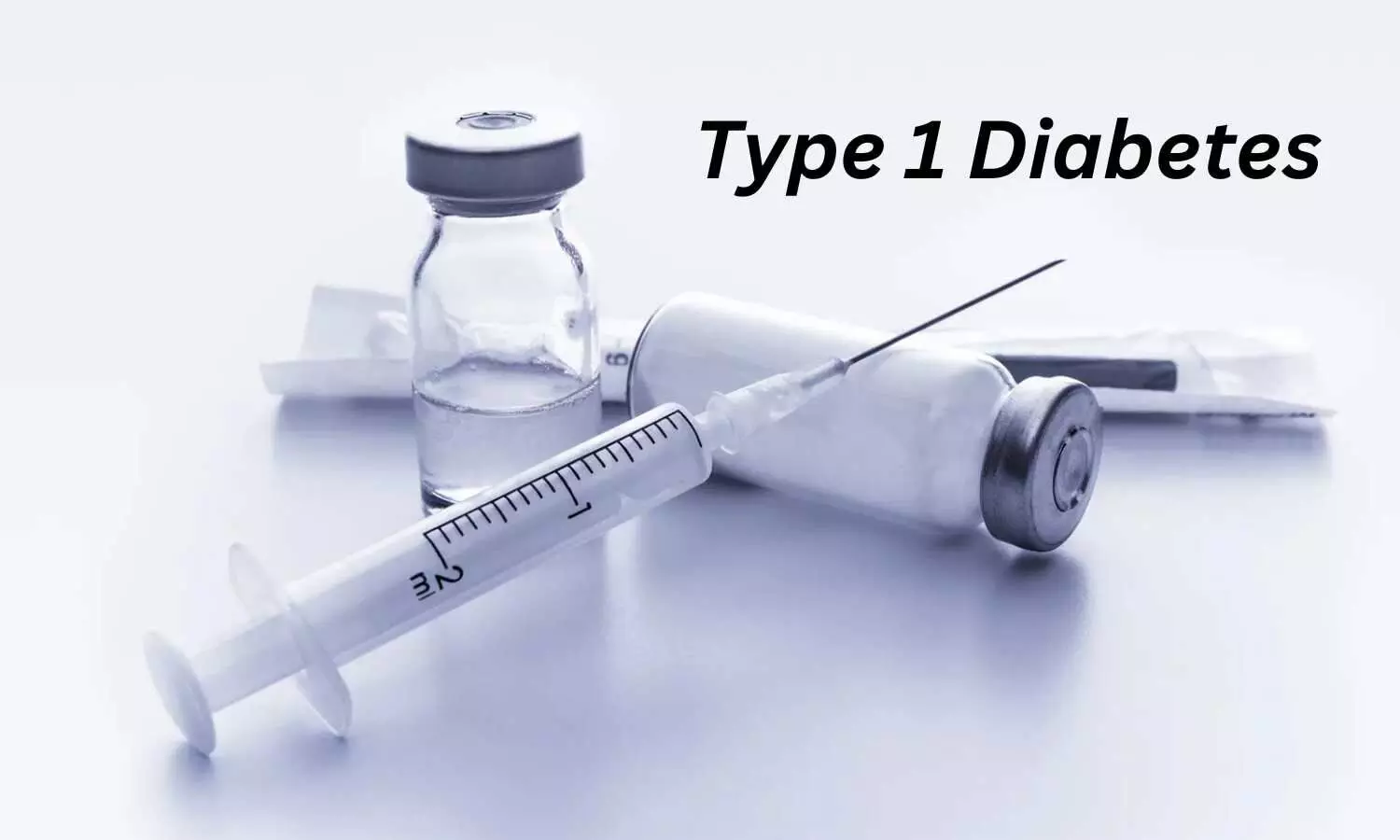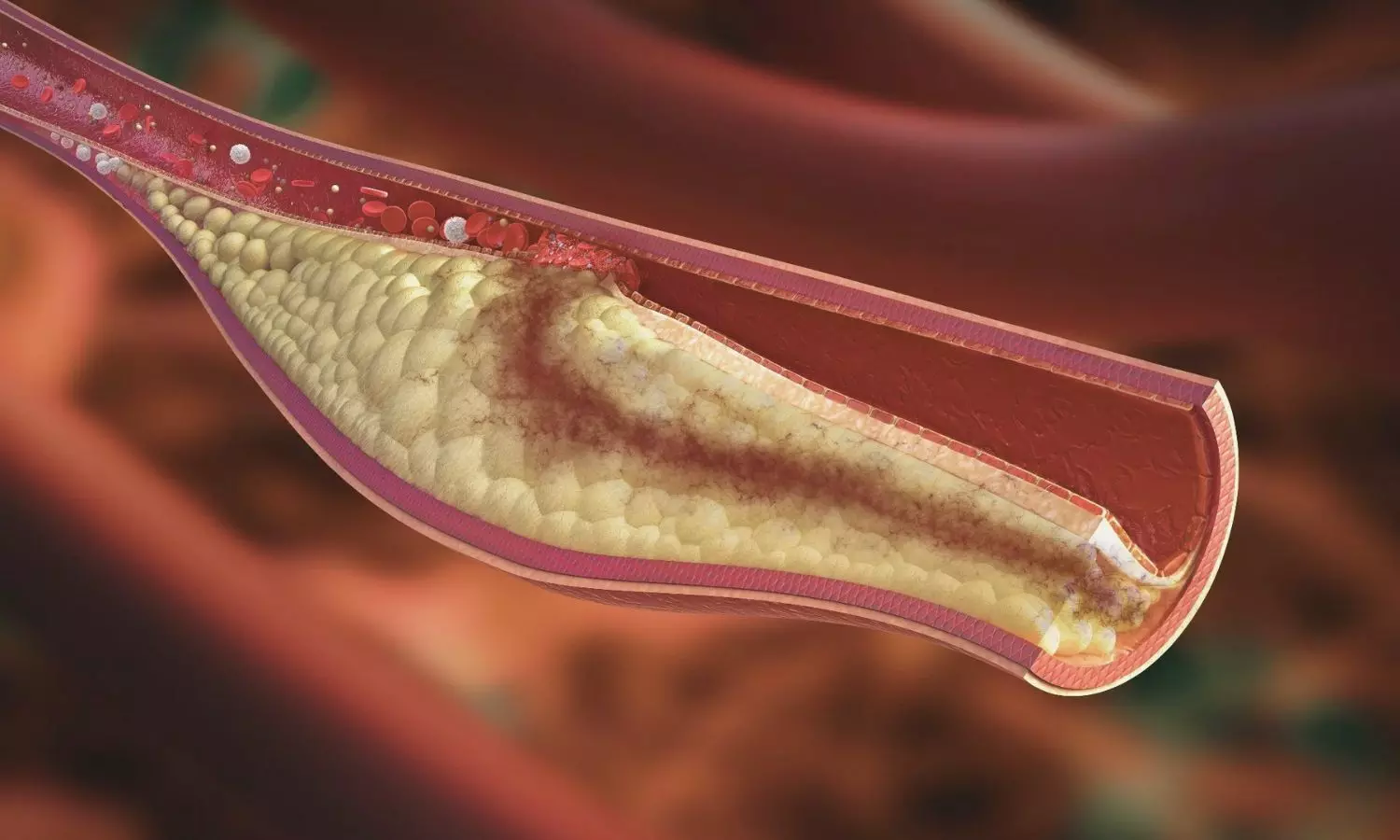Study reveals risk factors for spinal deterioration in r-axSpA
Powered by WPeMatico
Powered by WPeMatico
Powered by WPeMatico
Powered by WPeMatico

Mumbai: Sun Pharmaceutical Industries Limited has announced that US Food and Drugs Administartion (USFDA) has issued eight observations for its Halol facility at the conclusion of the inspection.
A Good Manufacturing Practices (GMP) inspection was conducted from 02 June to 13 June 2025.
An FDA Form 483 is issued to firm management at the conclusion of an inspection when an investigator(s) has observed any conditions that in their judgment may constitute violations of the Food Drug and Cosmetic (FD&C) Act and related Acts.
Sun Pharma is a specialty generics company with a presence in specialty, generics and consumer healthcare products. Sun Pharma’s global specialty portfolio spans innovative products in dermatology, ophthalmology, and onco-dermatology and accounts for over 18% of company sales. Its manufacturing facilities are spread across six continents.
Read also: Sun Pharma Sets Record with Over 1 Lakh Uric Acid Screenings in 3 Days
Powered by WPeMatico

Agartala: In one of Tripura’s most spine-chilling murder cases, a doctor’s jealousy, love, and obsession with his cousin allegedly drove him to kill a young man, who was previously in a relationship with her.
It has been reported that a deadly love triangle between the doctor, his cousin and the victim has led to the cold-blooded murder of the young man, Sariful, whose body was discovered inside a deep freezer at a shop in Gandacherra in Tripura.
The deceased, who worked as an electrician for the Agartala Smart City project, had been missing since June 8. His disappearance took a tragic turn when police found his body stuffed in a freezer on June 11.
Claiming that the murder is premeditated, the police described the incident in detail, saying that the doctor was in love with his cousin, but he was deeply jealous of Shariful, who was once in a relationship with his cousin. Even though the woman later grew closer to the doctor, he reportedly saw Shariful as a threat to his hopes of winning her over.
Also read- Jalgoan Honour Killing: 24-year-old doctor shot dead by Retired CRPF father
Out of jealousy and rivalry, he allegedly killed him and took help from his family members in carrying out the murder. The doctor’s family became active accomplices in disposing of the victim’s body in a deep freezer.
“Initial findings suggest that Dibakar Saha was in love with a woman who happened to be his cousin. The victim, Sariful, was also in a romantic relationship with the same woman. Jealousy and rivalry appear to be the primary motives behind the crime,” SP Kumar told TOI.
As per the Ukhrul Times news report, the incident took place when the doctor lured Sariful into the residence of a co-accused in the Indranagar locality of the city, under the pretext of giving him a gift. Upon arrival, Sariful found three others present – the family members of the doctor and the co-accused. At the designated location, the accused doctor strangled Shariful to death.
It has been reported that the doctor purchased a trolley bag, reportedly with the intent to use it for disposing of the body just two days before the murder. After committing the crime, the doctor hid Sariful’s body in the trolley and later shifted it to the house of a woman identified as Mousami.
The next day, the accused doctor’s parents travelled from Gandacherra to Agartala in a van and helped their son move the body. Together, they transported it back to their hometown and stored it in a freezer at their family-run shop.
Shariful’s family, worried after he didn’t return home, filed a missing person report on June 9, naming Dr *** as the last person he spoke to. This clue helped police zero in on the doctor, and following his arrest, he confessed during interrogation. His confession led to the arrest of all six people involved.
According to the police, the doctor had completed his MBBS from Bangladesh and resides at a rented house in Agartala’s Bankumari area, although his family is based in Gandacherra.
The arrested include the doctor, his parents, and the three others who were allegedly part of the murder and cover-up. Police say the investigation is still ongoing and more details may emerge in the coming days.
Also read- Patna shocker: Woman hospital director shot dead inside hospital premises
Powered by WPeMatico

Hyderabad: NATCO Pharma Limited has announced that the company has received one observation from the United States Food and Drugs Administration (USFDA) after the inspection at its Mekaguda, Hyderabad Active Pharmaceutical Ingredients (API) Unit.
NATCO Pharma Limited, headquartered at Hyderabad, India, develops, manufactures and distributes generic and branded pharmaceuticals, specialty pharmaceuticals, active pharmaceutical ingredients and crop protection products. The Company is a R&D oriented, and a science driven, leading Oncology player in the targeted therapies of domestic market and focuses on limited competition molecule in the US. The Company has 9 manufacturing sites and 2 R&D facilities in India. The Company’s manufacturing facilities are approved by several leading regulatory authorities like US FDA, Brazil ANVISA, Health Canada, WHO and others catering to 50+ global markets.
Powered by WPeMatico

Pune: Aundh District Hospital (ADH) has come under scrutiny following a surprise inspection that revealed serious lapses in hygiene, staff discipline, and attendance protocols. The Pune district civil surgeon has issued a strict warning to hospital staff, implementing disciplinary measures, pay cuts, and stricter attendance monitoring.
The inspection, conducted on May 30 by Dr. Radhakishan Pawar, Deputy Director of Health Services, revealed appalling conditions in the hospital’s wards and toilets. Despite the hospital having a significant number of sanitation and support staff, the premises were found to be in a filthy state. In addition, many staff members were absent during duty hours, and those present were not wearing the prescribed uniforms.
Also Read: Activists Call for Opening of 100-Bed Aundh District Hospital Amid HMPV Concerns
To ensure accountability, the hospital staff have been instructed to mark their attendance using the Aadhaar-based biometric facial recognition system. The official letter stated that failure to comply would result in non-payment of salaries.
Also Read: 100-bed Aundh District Hospital to be utilised for Ophthalmology department
Dr Pawar said, during the inspection, several staff were not in uniform and were without ID cards, which confused if they were staff or visitors to the hospital. “Orders have been given to take strict action,” he said, reports Hindustan Times.
Powered by WPeMatico

USA: People diagnosed with celiac disease or thyroid disorders may be at significantly increased risk of developing type 1 diabetes (T1D), according to new findings published in Diabetes, Obesity and Metabolism. The study, led by Dr. Steve V. Edelman from the University of California, San Diego, highlights the importance of proactive screening for early-stage diabetes in these patient populations.
The retrospective, observational study analyzed real-world insurance claims data to assess the incidence of new-onset type 1 diabetes among individuals with celiac disease, hyperthyroidism (such as Graves’ disease), and hypothyroidism (such as Hashimoto’s thyroiditis), compared with matched individuals who had none of these autoimmune conditions. The research team used a 1:1 propensity score matching strategy to ensure similar baseline characteristics between groups, allowing for a more accurate comparison of diabetes risk.
The study led to the following findings:
The researchers suggest that individuals with celiac disease or thyroid disorders could benefit from regular screening for type 1 diabetes, particularly for markers like islet autoantibodies that can indicate the presence of stage 2 T1D before clinical symptoms appear. Early detection could allow timely interventions, including disease-modifying therapies, potentially preventing or delaying the onset of overt diabetes and its complications.
These findings reinforce the interconnectivity of autoimmune conditions and highlight the need for integrated care approaches. The authors advocate for increased vigilance and screening protocols to identify at-risk individuals early, offering a window of opportunity for preventive strategies.
Reference:
Edelman SV, Agardh D, Cui N, Hao L, Wieloch M, Meneghini L. Risk of new-onset type 1 diabetes in individuals with celiac disease and thyroid disease-An observational study. Diabetes Obes Metab. 2025 May 28. doi: 10.1111/dom.16454. Epub ahead of print. PMID: 40437819.
Powered by WPeMatico

MASLD (metabolic dysfunction-associated steatotic liver disease) is linked to elevated ASCVD Risk in Type 1 diabetes patients suggests a new study published in the Cardiology Diabetology.
This study aimed to investigate the correlation between metabolic dysfunction-associated steatotic liver disease (MASLD) and atherosclerotic cardiovascular disease (ASCVD) in individuals with type 1 diabetes (T1D). Adults with T1D (n = 659) were consecutively screened for liver steatosis via abdominal ultrasound.
The presence of macrovascular disease (including coronary artery disease [CAD], peripheral artery disease [PAD], or ischaemic stroke [CVA, cerebrovascular accident]) was identified via electronic medical records. The 5- and 10-year risks of fatal/nonfatal ASCVD were assessed via the Steno Type 1 Risk Engine. Insulin resistance was assessed via the estimated glucose disposal rate (eGDR). Results: The metabolic dysfunction-associated steatotic liver disease prevalence was 16.8%.
The prevalence of composite atherosclerotic cardiovascular disease, CAD, PAD and CVA was greater in people with metabolic dysfunction-associated steatotic liver disease. The 5-year and 10-year risks of atherosclerotic cardiovascular disease were greater in those with metabolic dysfunction-associated steatotic liver disease. Metabolic dysfunction-associated steatotic liver disease was associated with prevalent atherosclerotic cardiovascular disease, independent of age, sex, diabetes duration, smoking, statin use, LDL-cholesterol, the glomerular filtration rate, albuminuria, and metabolic syndrome.
Metabolic dysfunction-associated steatotic liver disease is associated with both an increased prevalence of atherosclerotic cardiovascular disease and an increased calculated risk of fatal/nonfatal atherosclerotic cardiovascular disease in people with T1D.
Reference:
Mertens J, Weyler J, Dirinck E, Vonghia L, Kwanten WJ, Van Gaal LF, De Winter BY, Francque S, De Block C. Increased prevalence and risk of atherosclerotic cardiovascular disease in individuals with Type 1 diabetes and metabolic dysfunction-associated steatotic liver disease. Cardiovasc Diabetol. 2025 May 29;24(1):230. doi: 10.1186/s12933-025-02764-y. PMID: 40442720; PMCID: PMC12124096.
Powered by WPeMatico

Researchers have found in a new study that higher levels of the atherogenic index of plasma (AIP) is strongly associated with increased risks of all-cause and cardiovascular mortality among Cardiovascular-Kidney-Metabolic (CKM) syndrome patients. The study found AIP to be a good predictor of mortality among CKM patients, solidifying its position as a useful and easily available clinical biomarker. The study was conducted by Qianrong Z. and colleagues published in the journal of Cardiovascular Diabetology.
CKM syndrome is a newly developed clinical syndrome which recognizes the intertwined pathophysiology of metabolic disease, chronic kidney disease (CKD), and cardiovascular disease (CVD). As cardiovascular death remains the leading cause of death in the globe, it is necessary to identify early predictive indicators in patients with CKM. The AIP, as measured by the log ratio of triglycerides to high-density lipoprotein cholesterol (log10[TG/HDL-C]), has proven to be a sensitive marker of atherosclerosis and cardiovascular disease risk. Yet until recently, proof linking AIP directly to mortality in CKM patients was sparse.
This large scale observational study used 15,703 CKM syndrome cases diagnosed from the National Health and Nutrition Examination Survey (NHANES) data, conducted between 2005 and 2018. AIP was estimated for all participants and mortality was ascertained through linkage to the National Death Index (NDI), with follow-up through December 31, 2019.
Researchers used Kaplan-Meier survival curves, Cox proportional hazards models, restricted cubic spline (RCS) models, and subgroup analyses to examine the correlation of AIP levels with mortality outcomes. Participants were divided into tertiles according to their AIP values to be compared.
Key Findings
• A median follow-up duration of 7.67 years saw 1,570 deaths in the participants out of which 344 cardiovascular deaths were reported specifically.
• All-cause mortality: Participants in the uppermost AIP tertile had a 19% increased risk of all-cause death than those in the lowermost tertile (Hazard Ratio [HR] = 1.19; 95% Confidence Interval [CI]: 1.08–1.31; P < 0.001).
• Cardiovascular mortality: Risk of cardiovascular death was 38% higher in the highest AIP tertile (HR = 1.38; 95% CI: 1.22–1.57; P < 0.001).
• A positive linear dose-response association existed between both types of mortality and AIP levels when AIP was treated as a continuous variable.
• Kaplan-Meier curves illustrated considerably better survival outcomes among participants in the lowest tertile of AIP.
• Subgroup analyses revealed that the associations between higher AIP and higher mortality were sustained in all but most clinical and demographic variables, with the exception of gender, suggesting potential sex differences in risk associated with AIP.
This NHANES-derived study presents strong evidence that high AIP levels are independently and strongly linked to higher all-cause and cardiovascular mortality in patients with CKM syndrome. These findings highlight AIP’s utility as a simple, cost-effective, and non-invasive biomarker for mortality risk estimation. Routine clinical application of AIP could have a considerable advantage in managing and predicting patients with cardiometabolic and renal comorbidities.
Reference:
Zheng Q, Cao Z, Teng J, Lu Q, Huang P, Zhou J. Association between atherogenic index of plasma with all-cause and cardiovascular mortality in individuals with Cardiovascular-Kidney-Metabolic syndrome. Cardiovasc Diabetol. 2025 Apr 26;24(1):183. doi: 10.1186/s12933-025-02742-4. PMID: 40287685; PMCID: PMC12034140.
Powered by WPeMatico
